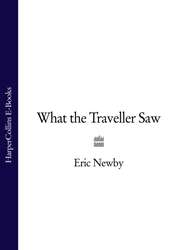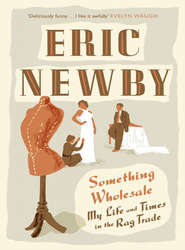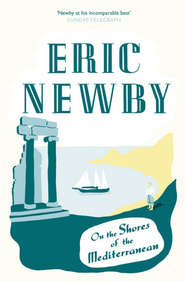По всем вопросам обращайтесь на: info@litportal.ru
(©) 2003-2024.
✖
Departures and Arrivals
Автор
Год написания книги
2018
Настройки чтения
Размер шрифта
Высота строк
Поля
Beautiful limpid, cloudless morning after a slight night frost. About 10.30 Mr Perring, Wanda and I sat down in the kitchen and went through the Folly Book (Follies and Grottoes by Barbara Jones, Constable, £10, an essential work for anyone foolish enough to go into the folly/grotto business).
We are looking for a grotto I thought I saw in Barbara Jones’s book. It was Gothic, small and built of rough, uncut stones with finials sprouting from the pediment. I must have seen it in Country Life, of which I appear to have 5,000 copies in the barn. The one we eventually sketch out for ourselves on the back of an envelope is based on a dramatically scaled down version of part of the entrance to the Hell Fire Caves at West Wycombe in Buckinghamshire, which in its original form would necessitate the introduction of slave labour in order to get it on the go.
Mr Perring of course immediately understands the sort of thing we have in mind. He is attracted by the great gaping entrances to the Hell Fire Caves with blackness behind, like the way into the lair of the Minotaur; but since our entire folly will only be about 6ft wide, such an entrance would leave no space for niches in the frontage, besides being rather draughty.
Eventually we agreed. Niches inside and out, slate ceiling. All to be filled with shell motifs; a marble head – Neptune, lion, satyr or whatever spouting water into a basin lined with variegated pebbles, from which it runs back into the river. Floored with egg-shaped stones from the beach at Branscombe, between Beer and Seaton. Chesil Bank, a 16-mile long beach of shingle with a clay foundation, between Bridport and the Isle of Portland, is too far away. God knows where we shall find the shells – we shall probably need thousands. Outside, ridge slate roof, masked by pediment with four rough finials to simulate living rock. The whole thing to be 7ft high, 6ft wide with a 3ft door and 7ft deep.
Mr Perring is a retired stonemason. He can do anything with stone except bend it and he knows how to make those huge stone balls that balance on pillars at the gates of the grander sorts of houses and occasionally fall on delivery vans. He is still a demon for work and not unnaturally thinks the country has gone to the dogs; if one accepts his standards of activity it is difficult not to agree with him. His immediate reaction is to mend a thing rather than ‘replace the unit’. Consequently he never throws anything away as ‘it might come in useful’.
He is also a vegetable gardener of near, if not actual, genius and he has won more cups for his vegetables than anyone else in these parts – there is a Perring Cup to be competed for by the less inspired.
Above all he is a man of natural taste, especially in anything to do with building – the country towns and villages in this part of the world are the results of the labours of generations of such men, now mostly dead and gone.
Mr Perring was chafing to begin and I was dispatched forthwith (from now on my role was no more than that of a drudge) to buy materials – just to be getting on with, and it didn’t go far – 5cwt sand, 2 sackfuls shingle, 2 sacks cement and a packet of chalk to mark the outline of the building on the back wall. We already had some dark limestone left over from rebuilding the porch, which would see us through for a bit.
By the end of the second day he/we had the foundations in, reinforced with bed-bars that Mr Perring found in a hedge. ‘I told you,’ he said. ‘Never throw anything away. You never know when it might come in handy.’ And then, looking at a sky full of leaden clouds, he added: ‘If it rains we’ll be stugged.’
It didn’t and we weren’t, and the next day he began to lay the first courses of the walls, breaking the stone as he went. When it began to get dark he knocked off. Before he went home to his tea, prepared by Mrs Perring, he advised me, as it was 5 November, to stuff the letter-box with damp newspaper to prevent the village boys – ‘them lot of young toads’ – blowing it up with fireworks, also to bar all entrances, which gave us a feeling of being besieged. Thwarted, they blew the lids off two half-filled dustbins, with spectacular results.
6 November.
Fine early, gloomy later. Scour countryside with Mr P for stone suitable for grotto building. Those quarries that have it want £11 a ton and another £10 on top of that to get it home. Our last load of similar stone cost £5 a ton. Late in the afternoon find a worked-out quarry at Ashburton, said to be a thousand years old, which is on the point of closing for ever. £5.50 a ton if we sort it ourselves, so we pick out about 4½ tons by hand with the help of the last quarryman – the others have been made redundant. This quarry is the epitome of melancholy: trees on the cliffs above shedding the last of their leaves down the sheer black walls, defunct machinery, rusty coloured pools of water, the last small heap of usable stones – reminiscent, with a dark, tall-spired church looming over us, of the paintings of Caspar David Friedrich. The negation of a Jolly Folly; but what a place to do away with oneself.
7 November.
A lorry arrives in the a.m. and deposits the stone from Ashburton with such a thunderous noise that neighbours rush into the street thinking that someone’s house has collapsed.
At this time I was trying desperately to write a book, but I soon gave up. It was obvious that Mr Perring regarded me as being on permanent call. As soon as I got started writing, I had to wheel more barrow-loads down to him. One Sunday, in order to snatch a whole day of uninterrupted work – he worked on the grotto Saturdays too – I wheeled down about fifty barrow-loads. On Monday I got it in the neck. ‘Don’t you go getting me more than five loads at a time, or I’ll be stugged,’ he said. ‘Any road, a lot of what you brought is a load of old rummage.’
Вы ознакомились с фрагментом книги.
Приобретайте полный текст книги у нашего партнера:
Приобретайте полный текст книги у нашего партнера:











